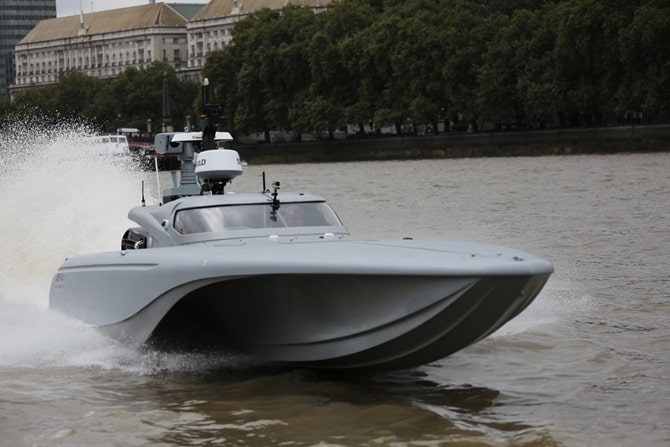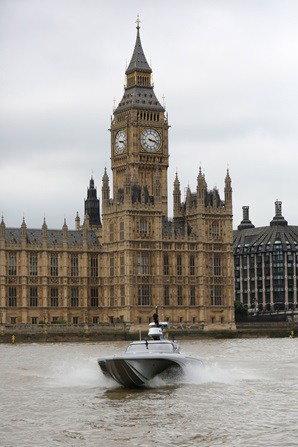Autonomous Royal Navy vessel takes to the Thames
The Royal Navy’s Maritime Autonomy Surface Testbed (MAST) underwent trials yesterday on the Thames, displaying its capability against the backdrop of some of London’s most famous landmarks.


Developed by Portchester-based ASV with funding from the Defence Science and Technology Laboratory (Dstl), the 32ft unmanned surface vessel (USV) uses the Bladerunner hull shape. It is planned that MAST will be a test platform for a range of autonomous technologies and systems that the Ministry of Defence is exploring.
“This is a chance to take a great leap forward in maritime systems,” said Fleet Robotics Officer Commander Peter Pipkin. “Not to take people out of the loop, but to enhance everything they do, to extend our reach, our look, our timescales, our efficiency using intelligent and manageable robotics at sea.”

MAST is able to operate autonomously in an unmanned mode, sensing and avoiding other vessels in its vicinity. Avoidance algorithms are designed to comply with internationally mandated collision regulations, but when operating on a busy waterway - such the Thames - a coxswain is on board ready to take control if necessary. Its primary function is surveillance and reconnaissance, and it does not carry weapons.
Register now to continue reading
Thanks for visiting The Engineer. You’ve now reached your monthly limit of news stories. Register for free to unlock unlimited access to all of our news coverage, as well as premium content including opinion, in-depth features and special reports.
Benefits of registering
-
In-depth insights and coverage of key emerging trends
-
Unrestricted access to special reports throughout the year
-
Daily technology news delivered straight to your inbox










Water Sector Talent Exodus Could Cripple The Sector
Maybe if things are essential for the running of a country and we want to pay a fair price we should be running these utilities on a not for profit...